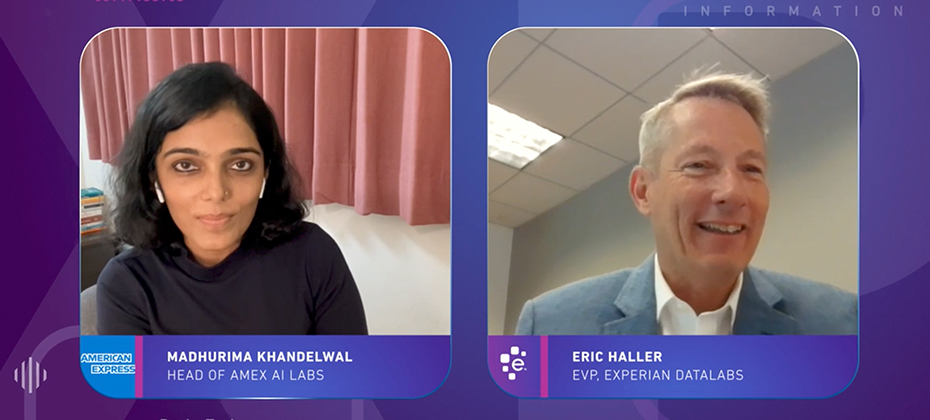Digital Technology

Successful salespeople know that their busiest time is never when they are selling a lot of cars. They are way busier when they are not selling! The act of prospecting, following up, and consultatively selling is a time consuming and challenging process. Nevertheless, for salespeople, this pattern can lead to long term success in automotive sales. Until the inventory and chip shortage issues are resolved, you may find that you are busier than ever. You can no longer wait to greet shoppers as they walk into the show room and spend time chatting and test driving in hopes they will purchase a vehicle the same day. Floor traffic has been on a steady decline for a decade and with today’s vastly reduced inventory there is vastly reduced foot traffic. This does not mean that you should not or cannot sell cars. It means that your time should be filled with prospecting, following up on marketing leads and focusing on the dealership’s loyal customers. Focus on strategies that drive pre-orders In addition to prospecting activities, you will need to be extra resourceful during the sales process. For example, when the dealership does not have a specifically requested car on the lot, you should shift focus from the standard sign-and-drive approach to a focus on pre-ordering vehicles. Pre-orders can be attractive to customers because they give them the ability to create a new vehicle according to their color, options, and other preferences rather than settling for whatever the dealer has in stock (which right now is minimal at best). Experian’s Automotive Intelligence Engine™ (AIE), a fully customizable suite of marketing solutions can provide you and your dealership with the data insights necessary to find consumers who would be interested in your brand and models and who are in an equity position to facilitate a pre-order. Here are a few examples of how AIE helps dealers find likely pre-order consumers: Scenario: A Mercedes dealership would like to secure pre-orders and generate interest in vehicles for when inventory becomes available in 2022. Utilize AIE’s Market Insights to find lifestyle and demographic information to find consumers with a high buying propensity to purchase a luxury vehicle. Use AIE’s Audience Targeting to learn who of those consumers are in a positive equity position. Identify consumers who are likely to buy your models based on their prior purchasing history. Using marketing solutions to help find the right consumer now to create interest in the future could be the key to success in 2022. Focus on short term leases opportunities In today’s market, we also recommend dealers focus on targeting consumers who are nearing the term of their lease—because the end of a lease forces consumers to either turn in the vehicle or purchase it. In many cases, the customer can upgrade to a model with more features or a model in a different class—both of which may be compelling, even if the newer vehicle is an older model year than the trade in. This way, the dealer obtains the later model, lower mileage vehicle and the customer gets a model with the extra features they want or an entirely new class of vehicle. The Automotive Intelligence Engine can provide dealers with near term lease consumers in their area for all brands. For an in depth look at this topic, read our November blog “Using Data Insights to Focus on Near-Term Lease Sales Opportunities.” Learn more about Experian’s Automotive Intelligence Engine.

Who said that direct mail was dead? Though consumers have flooded to digital channels since the onset of the pandemic, with 55% now having a higher expectation of their customer experience, traditional methods shouldn't be cast aside. On the other hand, sending printed mail without adapting to consumer demands may leave recipients disengaged and less likely to act. So, where does that leave marketers? How can businesses create a balance between traditional and digital credit marketing? Before diving into that discussion, it’s important to note that direct mail is still effective and when done right, can help businesses win the hearts and wallets of today’s consumers. According to the U.S. Postal Service’s (USPS) Certified Direct Mail Professional (CDMP) program, 79% of households say they read their daily mail, while 70% of recipients are curious to find out what’s in their mailbox. So, how can credit card marketers capitalize on these trends to generate higher response rates and returns from their direct mail campaigns? It’s simple – businesses must weave interactive elements and technology into their direct mail pieces to make them more effective and engaging. Here’s how credit card issuers are leveraging technology to level up their direct mail campaigns: QR codes QR codes, which allow consumers to read restaurant menus and make touchless payments with their mobile devices, have become a global sensation, with the number of interactions having grown 94% between 2018-2020. More recently, credit card marketers have included interactive QR codes into their direct mail pieces, allowing recipients to learn more about the offer, download their mobile app or quickly apply for a credit card. A few brands took it a step further by matching their QR codes with the colors of their logos to add more brand recognition and personalization. Voice Activated Call to Action (VACTA) According to Mintel, over 25% of U.S. adults own at least one smart speaker. To capitalize on this trend, many credit card issuers have included a Voice Activated Call to Action (VACTA) in their direct mail pieces. A VACTA allows recipients to respond to direct mail offers verbally by using their Amazon Alexa or Google Assistant device. Instead of reaching for their smartphones or laptops, consumers can call out to their smart speaker with the offer code. This low-effort, hands-free method is a quick and convenient way for consumers to engage with businesses as it enables them to respond to offers even when they are performing other tasks. Once their smart speaker receives the code, a link is then sent to the consumer’s phone so that they can examine the offer at any time. Giving consumers more flexibility enhances their experience and increases the chances of them responding to future offers. Additionally, including a VACTA in direct mail pieces allows marketers to manage, track and optimize their marketing campaigns in real-time. Because VACTAs make offers immediately redeemable, businesses can easily measure the performance and effectiveness of each direct mail piece. Informed Delivery emails What better way to build anticipation and excitement for direct mail offers than to give consumers a sneak peek of what’s to come? USPS’s Informed Delivery is a service that allows consumers to digitally preview their direct mail before it arrives in their physical mailbox. Until the physical mail piece is delivered, consumers can look at what the mailing might reveal or offer to them through email, an online dashboard or a mobile app. The best part? Informed Delivery emails meet today’s consumer expectations for convenient digital experiences as they are available to view them anytime, anywhere. Currently, one in five households has an Informed Delivery participant. What’s more, the average open rate for an Informed Delivery email is nearly 70%. By incorporating Informed Delivery into direct mail campaigns, businesses can generate additional impressions, improve customer engagement and drive more conversions. Doing direct mail, the right way Direct mail isn’t outdated, antique or ineffective – it has evolved and adapted to meet the expectations of today’s consumers. The use of QR codes, VACTA and USPS Informed Delivery, are just a few examples of how credit card marketers are leveraging digital enhancements to improve the success of their direct mail campaigns. While it’s clear that direct mail is still an effective way to reach consumers, businesses should not overlook the power of digital marketing. Expectations for seamless and connected digital experiences are higher than ever, making it crucial for businesses to develop strong digital marketing strategies. By engaging with consumers in the way that works best for them, with the right messages at the right time, you can drive more opportunities, reduce costs and deliver exceptional customer experiences. Learn more Download white paper

While dealers wait out the chip shortage, many are looking for new revenue streams and creative ways to maintain profit levels. Dealers understand that used vehicles are more valuable than ever and that savvy consumers who are near their lease term can purchase their vehicle with a much higher book value than their negotiated residual and capitalize on that extra equity. At Experian Automotive, we help dealers analyze consumer and market data insights so they can develop marketing strategies that more effectively engage consumers. In today’s market, we recommend dealers focus on targeting consumers who are nearing the term of their lease—because the end of a lease forces consumers to either turn in the vehicle or purchase it—and many consumers realize they can purchase their equity rich vehicle and trade it in anywhere. Dealers desiring to conquest customers would benefit from using data insights to develop marketing strategies to help educate consumers of their options. So, how do dealers make sure their lease customers remain loyal to their dealership? One way is to target those customers that are near term and recommend a trade in. In many cases, the customer can upgrade to a model with more features or a model in a different class—both of which may be compelling, even if the newer vehicle is an older model year than the trade in. This way, the dealer obtains the later model, lower mileage vehicle and the customer gets a model with the extra features they want or an entirely new class of vehicle. Both parties are happy. What about third party lease buy outs? In response to the inventory shortage, many captive lenders are no longer permitting 3rd party lease buy outs. In other words, consumers are required to purchase their leased vehicle at an in-brand dealership. Initially, this would appear to bolster brand loyalty by making it more challenging to switch brands. However, educated consumers know they can simply purchase the vehicle and drive it to another dealership as a trade. We recommend automotive dealers educate consumers on their options through effective marketing strategies that offer options and more freedom in their car purchasing. Dealers looking for every sales opportunity are utilizing data sources such as Experian’s Automotive Intelligence Engine™ (AIE) to identify all consumers with leased vehicles for their brands. Because the OEM will not share lease customer information for neighboring stores, dealers must seek out this information on their own. Experian’s Automotive Intelligence Engine provides off lease consumer information for conquest brands as well as dealer brands. The OEM still expects each store to be successful and using data-driven insights to uncover opportunities in this tight market is one critical way dealers can stay competitive and increase brand loyalty. The chip shortage will eventually recede but until then dealers can use automotive data insights that can help them remain profitable. Learn more about Experian’s Automotive Intelligence Engine.

Experian’s Sure Profile was selected as a Platinum winner in the “Fraud and Security Innovation” category in the sixth annual Fintech & Payments awards from Juniper Research, a firm dedicated to delivering thought leadership and analysis in the Fintech and Payment industries. An innovative service in the fight against synthetic identity fraud, Sure Profile is a comprehensive credit profile that provides a composite history of a consumer’s identification, public record, and credit information in order to detect synthetic identities. It utilizes premium data to help businesses identify potential synthetic fraud threats across credit inquiries, thus allowing lenders to transact more confidently with the vast majority of legitimate consumers. “Experian has always been a leader in delivering innovative services that both combat fraud and provide identity verification and trust to lending environments. Sure Profile delivers an industry-first fraud offering—integrated directly into the credit profile—that mitigates lender losses while protecting millions of legitimate consumers’ identities,” said Keir Breitenfeld, Senior Vice President, Portfolio Marketing, Experian Decision Analytics. “In times of rapid changes to customer interactions, growth strategies, and risk management practices, it’s particularly important to focus on building tools that can help businesses make better decisions and I’m proud that Experian has again provided an instrument to enable those decisions.” To learn more about Sure Profile and how Experian is working to solve this multibillion-dollar problem, visit us or request a call. Learn more

Chatbots, reduction of manual processes and explainability were all hot topics in a recent discussion between Madhurima Khandelwal, Vice President and Head of DataLabs at American Express®, and Eric Haller, Executive Vice President and head of Experian DataLabs. The importance of AI’s role in innovation in the financial services space was the focus of the recent video interview. In the interview, Khandelwal highlighted some of the latest in what American Express DataLabs is working on to continue to solve complex challenges by building tools driven by AI and Machine Learning: Natural language processing has come a long way in even the last few years. Khandelwal discussed how chat bots and conversational AI can automate the simple to complex to enhance customer experience. Document recognition and processing is another leading-edge innovation that is useful for extracting and analyzing information, which saves staff countless manual hours, Khandelwal said. Fairness and explainability are consistently brought to the forefront especially in financial services as regulators are looking at ways to prevent AI/ML from causing bias for the consumer. Khandelwal showcased how there is extreme rigor in each part of creating their models and how human oversight and training are primary drivers for how they stay on top of this. As for innovation advice, Khandelwal points out that it’s important to be aware that AI and innovation are not always interchangeable, and companies need to think through whether a problem needs to be solved through AI/ML models before charting ahead. Another major key to the equation is the data. In all use cases, the undercurrent of innovation in any form is dependent on the data being used. Learn more about this topic and what Harry Potter has to do with women in data science. Watch the Interview

It’s time for organizations to harness the power artificial intelligence (AI) can bring to digital identity management – quickly and accurately identifying consumers throughout the lifecycle. The rise in crime The acceleration to digital platforms created a perfect storm of new opportunities for fraudsters. Synthetic identity fraud, stimulus-related fraud, and other types of cybercrime have seen huge upticks within the past year and a half. In fact, the Federal Trade Commission revealed that consumers reported over 360,000 complaints, resulting in more than $580 million in COVID-19-related fraud losses as of October 2021. To protect both themselves and consumers, businesses — especially lenders — will have to find and incorporate new strategies to identify customers, deter fraudsters and mitigate cybercrime. The benefits of AI for digital identity In our latest e-book, we explore the impacts of AI on organizations’ digital identity strategies, including: How changing consumer expectations increased the need for speed The challenges associated with both AI and digital identities The path forward for digital identity and AI How to develop the right strategy Building a solution It’s clear that current digital identity and fraud prevention tools are not enough to stop cybercriminals. To stay ahead of fraudsters and keep consumers happy, businesses need to look to new technologies — ones that can intake and compute large data sets in near-real time for better and faster decisions throughout the customer lifecycle. By using AI, businesses will enjoy a fast and consistent decisioning system that automatically routes questionable identities to additional authentication steps, allowing employees to focus on the riskiest cases and maximizing efficiency. Read our latest e-book to dive into the ways artificial intelligence and digital identity interact, and the benefits a clear identity strategy can have for the entire user journey. Download the e-book

Shri Santhanam, Executive Vice President and General Manager of Global Analytics and Artificial Intelligence (AI) was recently featured on Lendit’s ‘Fintech One-on-One’ podcast. Shri and podcast creator, Peter Renton, discussed advanced analytics and AI’s role in lending and how Experian is helping lenders during what he calls the ‘digital lending revolution.’ Digital lending revolution “Over the last decade and a half, the notion of digital tools, decisioning, analytics and underwriting has come into play. The COVID-19 pandemic has dramatically accelerated that, and we’re seeing three big trends shake up the financial services industry,” said Shri. A shift in consumer expectations More than ever before, there is a deep focus on the customer experience. Five or six years ago, consumers and businesses were more accepting of waiting several days, sometimes even weeks, for loan approvals and decisions. However, the expectation has dramatically changed. In today’s digital world, consumers expect lending institutions to make quick approvals and real-time decisions. Fintechs being quick to act Fintech lenders have been disrupting the traditional financial services space in ways that positively impacts consumers. They’ve made it easier for borrowers to access credit – particularly those who have been traditional excluded or denied – and are quick to identify, develop and distribute market solutions. An increased adoption of machine learning, advanced analytics and AI Fintechs and financial institutions of all sizes are further exploring using AI-powered solutions to unlock growth and improve operational efficiencies. AI-driven strategies, which were once a ‘nice-to-have,’ have become a necessity. To help organizations reduce the resources and costs associated with building in-house models, Experian has launched Ascend Intelligence Services™, an analytics solution delivered on a modern tech AI platform. Ascend Intelligence Services helps streamline model builds and increases decision automation and approval rates. The future of lending: will all lending be done via AI, and what will it take to get there? According to Shri, lending in AI is inevitable. The biggest challenge the lending industry may face is trust in advanced analytics and AI decisioning to ensure lending is fair and transparent. Can AI-based lending help solve for biases in credit decisioning? We believe so, with the right frameworks and rules in place. Want to learn more? Explore our fintech solutions or click below. Listen to Podcast Learn more about Ascend Intelligence Services

Experian recently announced that it has made the IDC 2021 Fintech Rankings Top 100, highlighting the best global providers of financial technology. Experian is ranked number 11, rising 33 places from its 2020 ranking. IDC also refers to Experian as a ‘rising star.’ The robust data assets of Experian, combined with best-in-class modeling, decisioning and technology are powering new and innovative solutions. Experian has invested heavily in new technologies and infrastructures to deliver the freshest insights at the right time, to make the best decision. For example, Experian's Ascend Intelligence Services™ provides data, analytics, strategy, and performance monitoring, delivered on a modern-tech AI platform. With the investment in Ascend Intelligence Services, Experian has been able to streamline the delivery speed of analytical solutions to clients, improve decision automation rates and increase approval rates, in some cases by double digits. “Recognition in the top 20 of IDC FinTech Rankings demonstrates Experian’s commitment to the success of its financial clients,” said Marc DeCastro, research director at IDC Financial Insights. “We congratulate Experian for being ranked 11th in the 2021 IDC FinTech Rankings Top 100 list.” View the IDC Fintech Rankings list in its entirety here. Focus on Data, Advanced Analytics and Decisioning Creates Winning Strategy for Experian Experian’s focus on data, advanced analytics and decisioning has continued to gain recognition from various notable programs that acknowledge Fintech industry leaders and breakthrough technologies worldwide. Beyond the IDC Fintech Rankings Top 100, Experian won honors from the 2021 FinTech Breakthrough Awards, the 2021 CIO 100 Awards and was most recently shortlisted in the CeFPro Global Fintech Leaders List for 2022 in the categories of advanced analytics, anti-fraud, credit risk and core banking/back-end system technologies. “At Experian, we are committed to supporting the Fintech community. It’s great to see our continued efforts and investments driving positive impacts for our clients and their consumers. We will continue to invest and innovate to help our clients solve problems, create opportunities and support their customer-first missions,” said Jon Bailey, Vice President for Fintech at Experian. Learn more about how Experian can help advance your business goals with our Fintech Solutions and Ascend Intelligence Services. Explore fintech solutions Learn more about AIS

Artificial intelligence is here to stay, and businesses who are adopting the newest AI technology are ahead of the game. From targeting the right prospects to designing effective collections efforts, AI-driven strategies across the entire customer lifecycle are no longer a nice to have - they are a must. Many organizations are late to the game of AI and/or are spending too much time and money designing and redesigning models and deploying them over weeks and months. By the time these models are deployed, markets may have already shifted again, forcing strategy teams to go back to the drawing board. And if these models and strategies are not being continuously monitored, they can become less effective over time and lead to missed opportunities and lost revenue. By implementing artificial intelligence in predictive modeling and strategy optimization, financial institutions and lenders can design and deploy their decisioning strategies faster than ever before and make incremental changes on the fly to adapt to evolving market trends. While most organizations say they want to incorporate artificial intelligence and machine learning into their business strategy, many do not know where to start. Targeting, portfolio management, and collections are some of the top use cases for AI/ML strategy initiatives. Targeting One way businesses are using AI-driven modeling is for targeting the audiences that will most likely meet their credit criteria and respond to their offers. Financial institutions need to have the right data to inform a decisioning strategy that recognizes credit criteria, can respond immediately when prospects meet that criteria and can be adjusted quickly when those factors change. AI-driven response models and optimized decision strategies perform these functions seamlessly, giving businesses the advantage of targeting the right prospects at the right time. Credit portfolio management Risk models optimized with artificial intelligence and machine learning, built on comprehensive data sets, are being used by credit lenders to acquire new revenue and set appropriate balance limits. Strategies built around AI-driven risk models enable businesses to send new offers and cross-sell offers to current customers, while appropriately setting initial credit limits and managing limits over time for increased wallet share and reduced risk. Collections AI- and ML-driven analytics models are also optimizing collections strategies to improve recovery rates. Employing AI-powered balance and response models, credit lenders can make smarter collections decisions based on the most predictive and accurate information available. For lending businesses who are already tight on resources, or those whose IT teams cannot meet the demand of quickly adapting to ever-changing market conditions and decisioning criteria, a managed service for AI-powered models and strategy design might be the best option. Managed service teams work closely with businesses to determine specific use cases, develop models to meet those use cases, deploy models quickly, and monitor models to ensure they keep producing and predicting optimally. Experian offers Ascend Intelligence Services, the only managed service solution to provide data, analytics, strategy and performance monitoring. Experian’s data scientists provide expert guidance as they collaborate with businesses in developing and deploying models and strategies around targeting, acquisitions, limit-setting, and collections. Once those strategies are deployed, Experian continually monitors model health to ensure scores are still predictive and presents challenger models so credit lenders can always have the most accurate decisioning models for their business. Ascend Intelligence Services provides an online dashboard for easy visibility, documentation for regulatory compliance, and cloud capabilities to deliver scores and decisions in real-time. Experian’s Ascend Intelligence Services makes getting into the AI game easy. Start realizing the power of data and AI-driven analytics models by using our ROI calculator below: initIframe('611ea3adb1ab9f5149cf694e'); For more information about Ascend Intelligence Services, visit our webpage or join our upcoming webinar on October 21, 2021. Learn more Register for webinar

The collections landscape is changing as a result of new and upcoming legislation and increased expectations from consumers. Because of this, businesses are looking to create more effective, consumer-focused collections processes while remaining within regulatory guidelines. Our latest tip sheet has insights that can help businesses and agencies optimize their collections efforts and remain compliant, including: Start with the best data Keep pace with changing regulations Focus on agility Pick the right partner Download the tip sheet to learn how to maximize your collections efforts while reducing costs, avoiding reputational damage and fines, and improving overall engagement. Download tip sheet

Over the last year and a half, strong trends emerged in how businesses and consumers interact online - specifically when validating identities and preventing fraud. We initially explored these trends at a global level, and now we've explored U.S.-specific insights into online security, the customer experience, and digital activities and operations. Download the North America findings report to learn more about business and consumer fraud and identity trends impacting the way we live, work, and interact. Review your fraud strategy

For credit unions, having the right income and employment verification tools in place helps to create an application process that is easy and low friction for both new and existing members. Digital first is member first The digital evolution created an expectation for online experiences that are simple, fast, and convenient. Attracting and building trusted, loyal relationships and paving the way for new revenue-generating opportunities now hinges on a lender's ability to provide experiences that meet those expectations. At the same time, market volatility and economic uncertainty are driving catalysts behind the need for credit unions to gain a more holistic view of a member’s financial stability. To gain a competitive advantage in today’s lending environment, credit unions need income and employment verification solutions that balance two often polarizing business drivers: member experience and risk management. While verified income and employment data is key to understanding stability, it’s equally important to streamline the verification process and make it as frictionless as possible for borrowers. With these things in mind, here are three considerations to help credit unions ensure their income and employment verification process creates a favorable member experience. The more payroll records, the better Eliminate friction for members by tapping into a network of millions of unique employer payroll records. Gaining instant access into a database of this scale helps enable decisions in real-time, eliminates the cost and complexity of many existing verification processes, and allows members to skip cumbersome steps like producing paystubs. Create a process with high configuration and flexibility Verification is not a one-size-fits-all process. In some cases, it might be advantageous to tailor a verification process. Make sure your program is flexible, scalable and highly configurable to meet your evolving business needs. It should also have seamless integration options to plug and play into your current operations with ease. The details are in the data When it comes to income and employment verification, make sure that you are leveraging the most comprehensive source of consumer information. It’s important that your program is powered by quality data from a wealth of datasets that extend beyond traditional commercial businesses to ensure you are getting the most comprehensive view. Additionally, look to leverage a network of exclusive employer payroll records. With both assets, make sure you understand how frequently the data is refreshed to be certain your decisioning process is using the freshest and highest-quality data possible. Implementing the right solution By including a real-time income and employment verification solution in your credit union’s application process, you can improve the member experience, minimize cost and risk, and make better and faster decisions. To learn more about Experian’s income and employment verification solutions, or for a complimentary demo, feel free to contact an expert today. Learn more Contact us

Earlier this year, we shared our predictions for five fraud threats facing businesses in 2021. Now that we’ve reached the midpoint of the year and economic recovery is underway, we’re taking another look at how these threats can impact businesses and consumers. Putting a Face to Frankenstein IDs: Synthetic identity fraudsters will attempt to bypass fraud detection methods by using AI to combine facial characteristics from different people to form a new identity. Overexposure: As many as 80% of SSNs may have been exposed on the dark web, creating opportunities for account application fraud. The Heist: Surges in data breaches, advances in automation, expanded online banking services and vulnerabilities exposed from social engineering mistakes have lead to rises in account takeover fraud. Overstimulated: Opportunistic fraudsters may take advantage of ongoing relief payments by using stolen data from consumers. Behind the Times: Businesses with lackluster fraud prevention tools and insufficient online security technology will likely experience more attacks and suffer larger losses. To learn more about upcoming fraud threats and how to protect your business, download our new infographic and check out Experian’s fraud prevention solutions. Download infographic Request a call

As stimulus-generated fraud wanes, we anticipate a return of more traditional forms of fraud, including account opening fraud. As businesses embrace the digital evolution and look ahead to responsible growth, it’s important to balance the customer experience with the risks associated with account opening fraud. Preventing account opening fraud requires a layered fraud and identity management strategy that allows you to approve good customers while keeping criminals out. With the right tools in place, you can optimize the customer experience while still keeping risk low. Download infographic Review your fraud strategy

Establishing a strong digital strategy remains a top priority for most financial institutions. With more eyes on screens and electronic devices, the pandemic-induced shift to digital has increased the need to meet consumers where they are. New Innovations As a Result of an Accelerated Shift to Digital In Ernst & Young’s 2019 biannual Global Fintech Adoption Index, 46% of American respondents indicated they were using at least one fintech service. Fast forward, COVID-19 has accelerated the American adoption rate to 59%, according to a September survey conducted by Plaid, a leading digital payments infrastructure company. This shift to digital also resulted in an uptick in the creation of banking and savings processes that leverage advanced technologies. For example, digital-first technologies and artificial intelligence (AI) are changing the prescreen landscape as never before. For financial institutions, smart prescreen marketing solutions, coupled with a traditional approach to personalized service, present vast opportunities to build deeper consumer relationships. However, implementing an effective strategy can be challenging. In a recent webinar, Experian’s Vice President of Product Management Jacob Kong tackled the topic of using new analytics and AI to create a digital-first strategy. Joined by Mark Sievewright, founder of Sievewright & Associates and co-author of Digital Life, and Devon Kinkead, CEO of Micronotes.ai, they explored the evolution of banking and the possibilities offered by pairing data with technology in our new digital world. Watch the full webinar, 'Digital-First Strategies: New Analytics and Artificial Intelligence for Marketing,' and learn more about: The shift to digital life and banking, new analytics and AI How data and information value empowers prescreen marketing Emerging technologies and new tools that can support aggressive growth and marketing initiatives while mitigating risk How Experian is joining forces with Micronotes.ai to launch Micronotes ReFI powered by Experian, to help lower customers’ or members’ borrowing costs by refinancing mispriced debt Learn more about Micronotes ReFI powered by Experian To explore how Experian’s solutions and capabilities can power your prescreen and marketing strategies, please visit our solutions page or contact us for more information. Contact Us